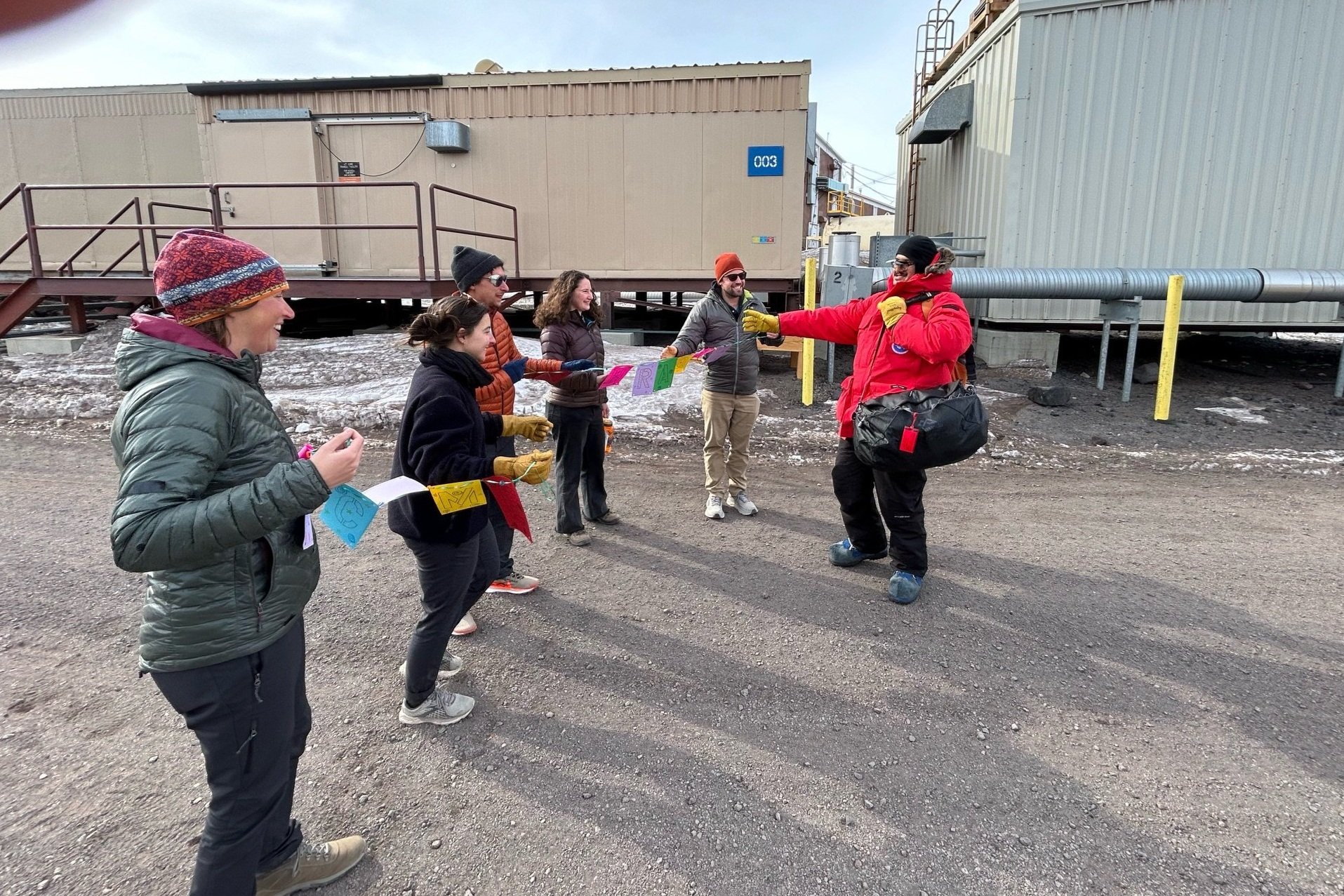The first wave of the NSF COLDEX field team has arrived in Antarctica!
Hello from US National Science Foundation COLDEX! The first wave of our 2024-2025 field team has successfully arrived at McMurdo Station. Over the last two weeks, members of the team have been catching up on and learning essential skills to ensure a successful deep field mission. They’ve learned to set up tents on ice, new knots for securing gear, and have been busy preparing their equipment before heading out onto the ice.
Here is an update from T.J. Fudge, Research Associate Professor at the University of Washington and Science Team Leader for the I-187 Team:
“Hi everyone. I’m back in Antarctica. Two years ago I went to South Pole and Herc Dome. This year I’m headed out to the Allan Hills. A windy part of the ice sheet where we can find million year old ice within 100 m of the surface. Currently we are in McMurdo preparing for the field season.
McMurdo is the main American station in Antarctica, and the largest base in Antarctica. It is the primary logistical hub with almost all US science passing through, whether for the deep field or South Pole; Palmer Station on the Antarctic Peninsula is the exception. The views from McMurdo are exceptional – mountains, volcanoes, sea ice and ice shelves.
Our team has been in McMurdo for about a week now and hope to fly to the field in the middle of next week. What do people do in McMurdo? Three things:
Training
Cargo Shipping
Waiting
For this post, I’ll write about the Training. Here’s the list:
Image by T.J. Fudge.
There are lots of good trainings, like Antarctic Field Safety where we cover basics about staying safe away from a station in Antarctica. This includes being prepared to use the Emergency Bags that we carry whenever we are away. We practiced tying knots, setting up tents, and lighting WhisperLite stoves.



Dan Morgan, a friend from grad school, and I exchanged looks and laughs when the instructor informed us we are older than Whisperlites.
Two trainings have been especially good. The first was an advanced snow machine training by Greg:
Image by T.J. Fudge.
Snow machines are vital for our science, and we are really rough on them – not because we go fast, but because we move on really hard surfaces. In fact, much of the time we are riding on ice rather than snow.
The other cool training is the Deep Field Shakedown. It used to be called Happy Camper. We spend a night on the ice sheet learning techniques for setting up Scott and mountain tents and just generally being able to cope in harsh conditions for long field seasons. Fortunately or unfortunately, we had really pleasant conditions, sunny, 15F, and breezy in the afternoon but calm in the evening and night.
The team stands in front of a Scott Tent as part of the Deep Field Shakedown.
Image by T.J. Fudge.
We still have a few training [sessions to go to]. One is for using chainsaws. Another is hopefully going to be practicing v-threads on the sea ice. V-threads are a way of making really strong anchors for the tents. Regular tent stakes don’t work in ice, so you drill into the ice at an angle, drill into the ice a second time at the opposite angle to hollow out a V. Then you put the tent cord through the v-thread to hold it down.
T.J. Fudge demonstrates proper V-threading technique to the team on an ice pond above McMurdo Station.
Image by Liam Kirkpatrick.
Our camp is currently being set up by our Camp Manager and Field Coordinator. They have the communal tents up and with any luck we will be in the field in a few more days.”
Here are some more images of the team traveling to and settling in at McMurdo Station (click image to view in full size):
NSF COLDEX thanks the United States Antarctic Program for logistical support, with coordination and support from NSF Office of Polar Programs, NSF Antarctic Infrastructure and Logistics Program, the NSF Ice Drilling Program, the NSF Ice Core Facility, and the Antarctic Support Contractor for logistical support.













